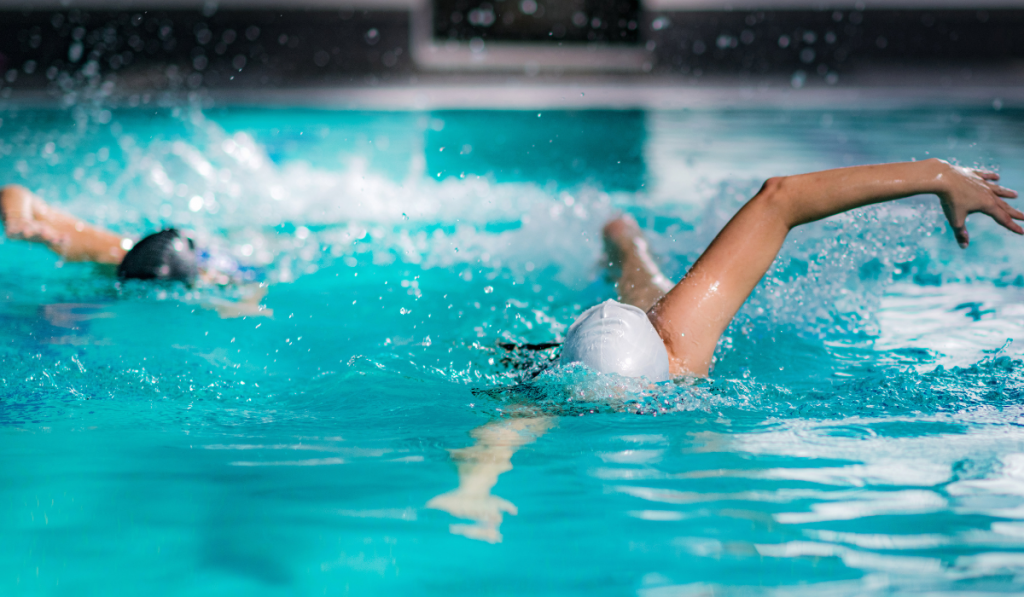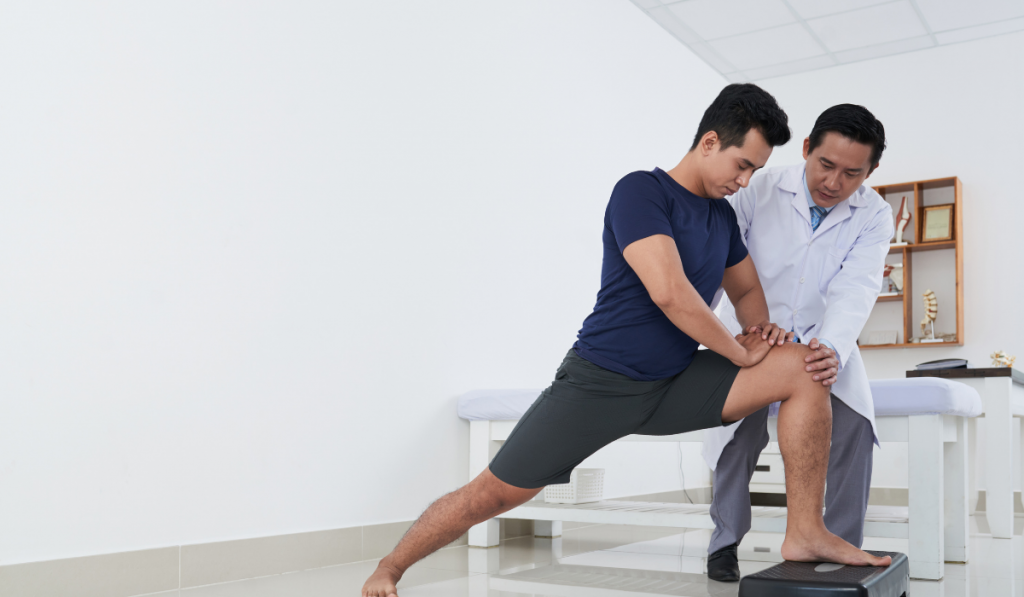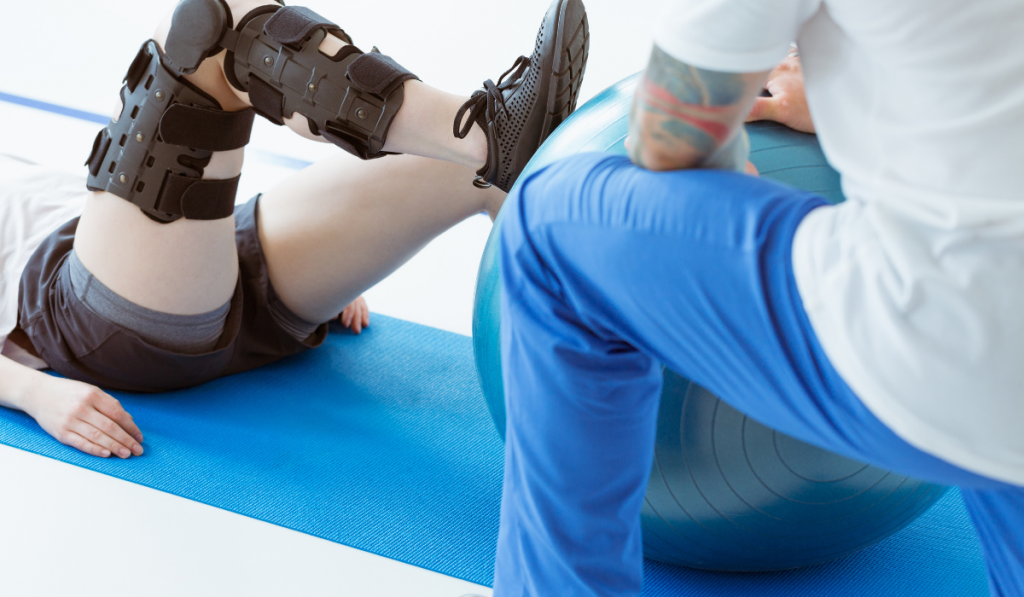How to Maintain Running Fitness While Injured
Are you wondering how to maintain running fitness while injured? Don’t worry. We’ve got you.
No doubt, your recent injury has you bummed out because you won’t be getting on the pavement for a while. But then, you do not have to sulk through your recovery period and lose that hard-earned fitness.
Even while injured, you can keep your body in top shape, so it will almost seem like you never left whenever you get back.
Below, we discuss some exercises you can do to maintain your running fitness while sidelined. We also offer other tips that can help you maintain your fitness. Read on for the details.

Exercises You Can Do to Maintain Fitness While Injured
Aqua Jogging
Aqua jogging – also known as pool running – is one of the most common and effective exercises for sidelined runners.
Aqua jogging or pool running may not allow you to maintain your usual running cadence and posture, though.
However, its movements are pretty similar to regular running. So, it should exercise your heart and muscles almost the same way as running.
Pool running is a low-impact, high-resistance exercise. The chances of worsening your injury while doing it are pretty low.
You could get a running belt to keep you upright during your drills. Mixing in other low-impact exercise routines can add variety and keep you focused.
Try Another Sport
You could try another sport that does not require as much impact as running.
You could try exercises like cycling or swimming. They might not give you the same high as running, but they will definitely give your body a decent workout.

Antigravity Treadmill
To maintain your running fitness, you could run on an antigravity treadmill.
You will not put significant stress on your muscle and bones, but you can still work your cardio out.
Ordinarily, the intensity of a treadmill might leave you at risk of worsening your injury. But with the ability of antigravity treadmills to leave you weightless, this is less likely.
Even better is the fact that you can control your weightlessness on an antigravity treadmill. You can adjust the device to hold between 20% and 100% of your body weight.
Walk-Run Intervals
Instead of doing your typical running routines, you can do walk-run intervals. Depending on how injured you are, you could also make it walk-jog intervals.
The walk-run or walk-jog interval involves you running lightly or jogging for a few minutes, then walking for longer. You could jog for 3 minutes, then walk for around 15 minutes.
The ratio of running or jogging to walking depends on how bad your injury is and how much pain you feel.
If the injury is pretty bad, you may even be unable to move. So, let your physician or physical therapist assess your injury before doing any physical activity.
When you try to get into a walk-run or walk-jog interval, start slowly. Do not rush it; take in the joy of getting back out there slowly, and let your body adjust to the workout.

Stair Walking
You could also maintain your fitness by stair walking. The motion of stair walking uses the same group of muscles as squats and lunges.
Walking up stairs also exercises your lungs and cardio, keeping them in top shape.
Tips for Maintain Running Fitness While Injured
While trying to keep yourself fit during your injury period, the following tips will come in handy.
Avoid Most High-Intensity Interval Training
You wouldn’t want to get into high-intensity interval training when injured or returning from injury. This is especially true if the high-intensity interval training involves impact.
While high-intensity interval exercises like high-impact sprinting and jumping can work your cardio, there are other safer options. So, opt for the alternatives instead.

Pay Attention to Your Pain
You may not be pain-free when you finally start getting back to running after your injury. But the presence of pain is not an issue.
However, if running makes you uncomfortable or makes the pain worse, there could be trouble.
So, when running or when training to get back to running, pay close attention to your pain level. You may have to stop training or reduce the intensity if it worsens while training.
On the flip side, you could increase training intensity gradually if the pain does not worsen and if you do not feel discomfort.
Learn More About Your Injury
You will benefit a lot if you see a physiotherapist, running technique coach, or podiatrist while injured. Any of these professionals can help you understand your injury better.
It would be even better if the healthcare professional who attends to you is also a runner. They would better understand the loads and stresses involved in running. So, their explanation might be more relatable.
Why should you learn more about your injury? Well, if you know why you got injured in the first place, you can avoid a repeat injury.
It is not uncommon for runners to get injured because they tried to get intense too fast. But apart from that, if your running form is not ideal, you may end up with an injury.
If you can, get your health professional to do a biochemical assessment of your body. The assessment might reveal potential issues in your body.
You can get practical advice on better running forms to adopt with such revelations. You may also learn of exercises that reduce your risk of injury.

Be Patient
As an injured runner, patience is one of the most vital pieces of advice you can apply.
For sure, it sucks to remain on the sidelines. It sucks to be in pain and be unable to do what you love. But the good news is, you will get better with time.
Most running injuries can be treated successfully. Of course, the healing process is never instant. But if you give it time, your body will be as good as new.
So, reassure yourself that you will be back out there soon, no matter how bad the injury seems.
Do Your Fitness Routine Outdoors
When injured, doing your fitness routine outdoors helps a lot. For one, the view of the world around you can distract you from the painful fact that you have an injury.
But apart from that, when you are outdoors, you take in a lot of oxygen, just like you do when running. This could give you a rush similar to what you get when running.

Try Not to Be Grouchy
Yes, having a running injury might leave you unhappy, but do not be too irritable about it. Do not go around whining or moaning about your condition; doing so might even make you feel worse.
Try to remind yourself that the injury will heal in due course.
Since most running injuries are minor, you have many reasons to stay positive and persevere through your fitness workouts.
Stick to Your Routine
Avoid creating a new routine for yourself; stick to your routine. Of course, you wouldn’t get into intense races when injured, so work with your usual running schedule and patterns.
You offer your body a semblance of your regular running routine by sticking to your routine. This can be mood-boosting, as you may feel that your return to normal is near.

Stay in Touch
When injured, you may not get to see some of your running buddies as often as you used to. Sadly, this means you’d have a lot of alone time, which leaves you at a high risk of becoming self-absorbed.
To prevent depression, try to stay in touch with your friends. You could also try volunteering at races or spending more time with your family.
Do Something That Makes You Sweat
If having a sweat-drenched T-shirt makes you feel accomplished, do exercises that make you sweat. Of course, you should only do workouts that do not aggravate your injury.
When you sweat, you get your usual feeling of accomplishment. That feeling can boost your mood and assure you that you are still on the path to fitness.

Eat Well and Eat Healthy
There is every chance that you can put on a few pounds when you are not running actively.
In other words, since your workouts are less intense, you may not burn as many calories as usual. This leaves you open to weight gain.
To avoid gaining weight while injured, eat well and eat healthy.
Now, we are not saying you should fast or avoid eating – you need balanced meals for your body to heal. But you should cut down on some unhealthy meal choices.
If you eat well, you will not gain too much weight. So, doing your fitness routines won’t be so hard. Besides, maintaining a lean body mass might help keep your confidence high.
Do Your Cross-Training With a Friend
Doing cross-training like pool running with a friend can make the sessions better. This is especially true if the friend is also injured at the time.
Your journeys would be similar, so you can share the experience of healing and get back to running together.

Get a Lot of Rest
While trying to maintain your fitness, do not forget to rest well. Getting enough rest will go a long way to ensure that your injuries heal faster.
Besides resting, ensure you follow your healthcare professional’s instructions. Raise and ice the injury if you have to.
Final Thoughts
Following these tips and trying some of these exercises will help you maintain fitness and offer a variety that will make the recovery process more enjoyable.







